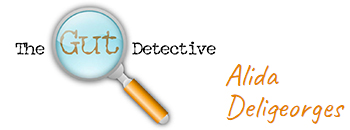10 Ways To Stop Sugar Cravings
One of the best things you can do for your health is to take back control from sugar!
If you are getting too much sugar – you are not alone. Most people are getting at least 3 times too much sugar in their daily diets – that doesn’t even take into account all the flour and simple carbohydrates.
The biggest issues that most of us have – is that sugar is highly addictive (as addictive as a drug), and we are eating it often without even realizing it – because it is hiding in most packaged and processed foods.
Women should get no more than 6 teaspoons of added sugar a day (24 grams).
Men should get no more than 9 added teaspoons of sugar a day (36 grams).
Keep in mind – one can of soft drink (355ml) has on average 10 teaspoons of sugar.
It might sound easy, but with the average Aussie having more than 27 teaspoons a day, it’s harder than you think.
Just remember that nutrition and lifestyle changes can be very powerful tools to help you change your health and reduce your risk of future diseases.
Let’s examine some ways to get our sugar levels back into control:
1. Avoid Processed Foods
Sugar and processed foods are as addictive as heroin or cocaine. Eating sugar artificially stimulates a region of your brain called the “nucleus accumbens” to produce dopamine, the pleasure neurotransmitter.
Soon enough though, dopamine levels drop, and we start to feel “flat” or a bit “down”. We crave this pleasant, feel-good sensation again and reach for addictive sugar once more.

2. Eat Regularly
Perhaps one of the most important tips when it comes to balancing blood sugar. Eating inconsistently can lead to eating larger meals, which provides more opportunity to spike blood sugar. Eating smaller meals on a consistent schedule (e.g. every 2-3 hours) can really helps balance blood sugar.
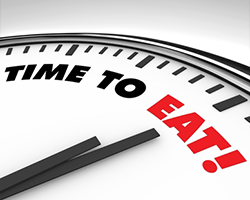
3. Drink Plenty Of Fluids
Sometimes you think your body is asking for sugar, when in fact it’s dehydrated and really craving water. Not drinking enough can cause elevated blood sugar on its own.
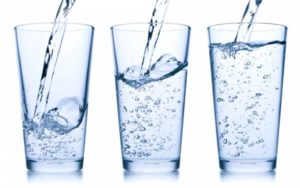
4. Get Regular Exercise
Exercise and movement both allow the body to move sugar from the blood stream into tissues and muscles where it can be utilized and stored.
Long-term exercise makes cells more responsive to insulin and helps prevent resistance.
Regular movement has the huge benefit in promoting weight management also.

5. Manage Stress
Excessive stress can actually cause blood sugar levels to rise due to an increased release of cortisol (our stress hormone), along with an increased craving for “comfort foods” (many of which are refined and filled with sugar or other inflammatory ingredients).

6. Get Adequate Rest
Individuals with inconsistent and inadequate sleep patterns may suffer from more inconsistent blood sugar levels.
A lack of sleep can raise stress and appetite hormones (like cortisol and ghrelin, which make you hungry), making it harder to avoid sugary snacks, refined grain products and caffeine.
Experts recommend around 7-9 hours of sleep, not only for overall health, but also for improved hormonal regulation, curb stress responses, and therefore blood sugar as well.

7. Eat Healthy Fats and More Protein
Healthy fats acts to slow digestion, which can help to prevent blood sugar spikes and through slowing digestion, may also help to promote satiety.
Good sources of healthy fats include: unsalted nuts and seeds, nut butter, avocado, flax and chia seeds, organic grass-fed butter, cold pressed and unrefined oils such as olive, coconut, avocado, macadamia, wild or organic fish including salmon.
Protein works in a similar way to fat when it comes to promoting satiety (fullness) and slowing digestion, both of which are key factors when it comes to promoting blood sugar regulation.
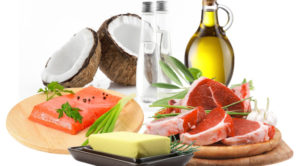
Good sources of healthy and lean protein include: Lean organic and wild animal meats (e.g. turkey, chicken and grass-fed beef) and pea-based protein, such as hemp and fermented pea (both great additions to a juice or smoothie).

8. Add Some Fibre
Fibre works similarly to protein and healthy fat in that it can helps to promote satiety and slow digestion (acting to blunt blood sugar levels), and also may help promote weight loss.
Good sources of fibre include: whole fruits and vegetables, whole grains (e.g. quinoa and brown rice), nuts and seeds.

9. Take Micronutrients
Cinnamon is a wonderful spice that plays a role in promoting balanced blood sugar. It can be added to tea, yoghurt, hot or cold cereals, and even smoothies.
Chromium is a trace mineral that helps to promote balanced sugar levels. It can be found in unprocessed foods including broccoli, potatoes, green beans, bananas, nuts, lean meat and mushrooms. Chromium supplements are also available.
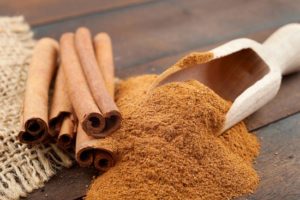
10. Avoid Artificial Sweeteners
Artificial sweeteners and other sugar substitutes are found in a variety of processed food, beverages, and even medications. They are often marketed as “sugar-free” or “diet”, in particular in soft drinks, chewing gum, jams, baked goods, canned food, confectionery, fruit juice, ice-cream, yoghurt, and so much more.
Artificial sweeteners are attractive alternatives to sugar because they add virtually no calories to your diet. In addition, they are many times sweeter (e.g. 200-600 times sweeter) than regular sugar so you need to use a small amount.
Most are synthetic sugar substitutes, but they may be derived from naturally occurring substances, including herbs or sugar itself.

There are 3 main groups of sweeteners: sugar free (polyols), artificial and natural.
1. Sugar free sweeteners: the polyols
Sugar free sweeteners can have a laxative effect in large doses or in sensitive consumers, and have been associated with a misdiagnosis of Irritable Bowel Syndrome (i.e. stomach pain, gas, bloating, irregular bowel motions, etc).
For this reason, it’s best to avoid them.
Polyols are so called because their name often ends in -ol:
- 420 Sorbitol
- 421 Mannitol
- 953 Isomalt
- 965 Maltitol (or hydrogenated glucose syrup)
- 966 Lactitol
- 967 Xylitol
- 968 Erythritol
- 1200 Polydextrose
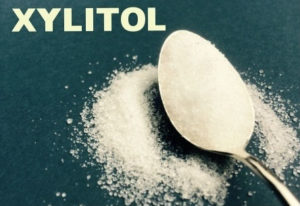
2. Artificial sweeteners
Artificial sweeteners (also known as intense sweeteners) have been promoted as a way to assist weight loss and manage diabetes.
However, research shows that the 3 most commonly used artificial sweeteners – aspartame, sucralose and saccharin – can cause elevated blood glucose levels by altering the beneficial bacteria in the gut in a way that can promote both obesity and diabetes.
The safety of artificial sweeteners has not been proven, and there have also been reports of addiction and countless ill side effects.
For this reason, they certainly need to be avoided as they are in fact just poisons.
Some artificial sweeteners include:
- 950 Acesulphame-K or Ace-K (“Sunette”)
– caused cancer and tumours in animal tests
- 951 Aspartame (“Nutrasweet”, “Equal”)
– there are almost 200 possible side-effects, including headaches, seizures and brain tumours.
– it is made of 10% methanol which breaks down into formaldehyde, a well-known carcinogen. Our bodies don’t have the enzyme needed to break down methanol.
– Aspartame contains phenylalanine and should not be consumed by people with the rare genetic disorder, phenylketonuria.
- 952 Cyclamates
– suspected carcinogen banned in the UK and USA in 1970 but still permitted in Australia
- 954 Saccharin (“Sweet N Low”, “Sugarine”)
– linked to kidney lesions, eye deformities, bladder and reproductive cancers
- 955 Sucralose (“Splenda”)
– it is a chlorinated sugar (a chlorocarbon) which creates havoc on the immune system by delivering chlorine directly to the cells.
– can cause problems in the thymus, kidney, liver, and spleen, as well as hormone disruption

3. Natural sweeteners

- Fructose
Fructose is naturally found in fruit, fresh or frozen.
However, when heavily processed, fructose is very bad news and should be completely avoided also. Fructose are known to increase the triglycerides released into the bloodstream following a meal, which is a risk factor for heart disease.
Common types of such high fructose products include:
– High fructose corn syrup
– Agave nectar
– Maple syrup
– Cane sugar
– Coconut sugar
– Date sugar
– Molasses
– Fruit juice
- Stevia
The all-natural sweetener Stevia has zero calories, does not raise blood sugar levels, assists with weight loss and has anti-cancer properties.
If you have sugar cravings and want to satisfy your sweet tooth safely, Stevia is your best option. It is one of the safest sugar substitutes, since it’s derived from a herb (the leaf of the Stevia plant). Just remember to use a very small amount since it is concentrated “sweetness” (200 time sweeter than sugar).

- Raw Honey
Raw honey is another good option, but it is still a type of fructose, so it’s best to use no more than a teaspoon a day.
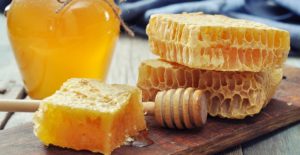
One of the best things you can do for your health is to keep your blood sugar at a relatively consistent level. I hope you have now gained some tips that will spare your body from the significant burden of blood sugar fluctuation and will help you maintain a steady mood and energy level as well.
CLICK HERE for consultations with me….
